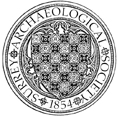Archaeological assessment by N Bannister for the Woodlands Trust revealed that wood banks are the predominant archaeological feature. These are likely to be at least medieval and probably date from when the woods were enclosed to prevent stock grazing. The woods were once much larger, and reduced earthworks on the western side suggests that subsequent fields or assarts were created by clearing areas of the woodland. Ditches of 19th century date, dug to aid drainage in the woods, and evidence of Second World War military activity in the form of slit trenches, were also discovered.
